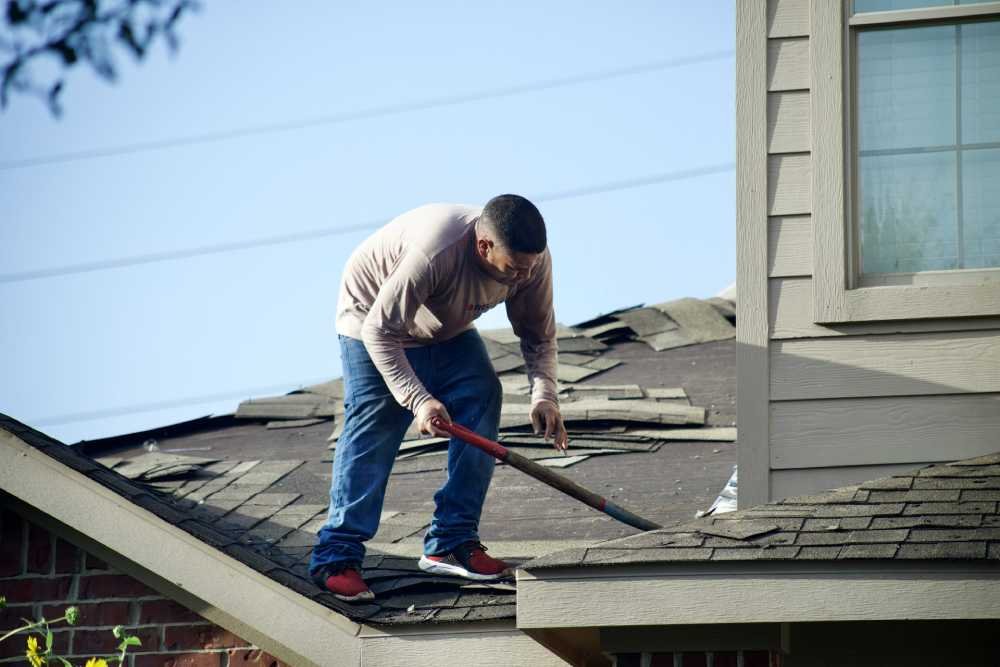Emergency Roof Repairs: Post-Storm Action Plan
Your roof may sustain severe damage from storms, necessitating immediate repairs. The first step to minimize further damage is safely assessing the condition of your roof. Before heading outside, make sure there are no imminent dangers, such as downed power lines or unstable structures.
You may look for clear indications of roof damage, such as missing shingles, fractured tiles, or visible leaks, by using binoculars from the ground. This initial inspection will let you assess the extent of the injury without putting you at risk.
While some damages might seem minor or insignificant, they can rapidly escalate if left unattended. Therefore, it’s crucial to have a detailed inspection conducted by professionals who specialize in roof installation and repairs. These experts can detect underlying problems that aren’t immediately visible to an untrained eye, ensuring a comprehensive assessment of your roof’s health.
Contents
Temporary Fixes
After assessing the damage, implementing temporary fixes can prevent further complications. For instance, covering visible leaks with a heavy-duty tarp can stave off additional water damage. To secure the tarp, use a rope and bricks if you need specialized equipment.
Roofing cement can be used as a fast temporary remedy if any shingles have been knocked loose by the storm until a professional can offer a long-term fix. These temporary measures are critical as they buy you time to arrange for professional repairs without suffering further damage to your home.
How to Secure a Tarp
- Measure the area of the roof that requires covering and cut the tarp accordingly. Take care to measure generously to ensure complete coverage.
- Use a stable ladder to reach the affected area safely. Always prioritize your safety!
- Secure the tarp by nailing wooden strips along its edges. If nails aren’t available, use sandbags or heavy weights to keep the tarp in place, ensuring it won’t blow away in subsequent winds.
For a more thorough guide, check the Red Cross guide on securing a roofing tarp. By taking these precautions, you may significantly reduce the risk of more water incursion into your house.
Preventive Measures for the Future
To prevent future storm damage to your home, it’s essential to regularly inspect your roof, especially before and after storms, to identify minor issues before they escalate into major problems. This proactive approach saves stress and can be cost-effective in the long run. Consider upgrading to weather-resistant materials like metal roofing or impact-resistant shingles for future roof installations.
Storm damage is less likely when routine maintenance is performed, such as clearing gutters and pruning overhanging trees. To enhance water flow, stop leaks, and avoid structural damage, make sure your roof is clear of debris and obstacles. Prioritize safety and seek professional advice for long-term home security.
Contacting Professionals
Professional roofing services are crucial for lasting repairs, as they offer comprehensive solutions for both visible and hidden issues. Even minor damage can compromise a home’s structural integrity if not addressed.
Consulting with experts ensures thorough inspection and repair, reducing future problems. They can also provide an itemized list of materials and labor costs, which is essential when filing insurance claims. This detailed documentation clarifies the scope of work and aids in smooth processing, providing peace of mind.
Filing Insurance Claims
One of the most crucial steps after securing immediate damage is to contact your insurance provider to start the claims process. Immediate and thorough documentation becomes the cornerstone of your insurance claim. Use your smartphone to take high-resolution photographs of the damage, capture videos, and keep records of any temporary fixes applied.
Steps to Filing an Insurance Claim
- Report the damage to your insurance company right away. Initiating the claim process promptly can expedite your coverage.
- Assemble all required paperwork, such as invoices for goods purchased, ownership confirmations, and pictures of the damage.
- Meet with an insurance adjuster if required. They may need to conduct an in-person assessment to validate your claim.
- Provide receipts and estimates from professional roofers. Having detailed documentation from expert assessments can speed up the processing of your claim.
Taking these proactive steps ensures your insurance claim is accurately submitted, increasing the likelihood of receiving compensation promptly. Effectively navigating the intricacies of insurance claims requires being well-informed and organized.

